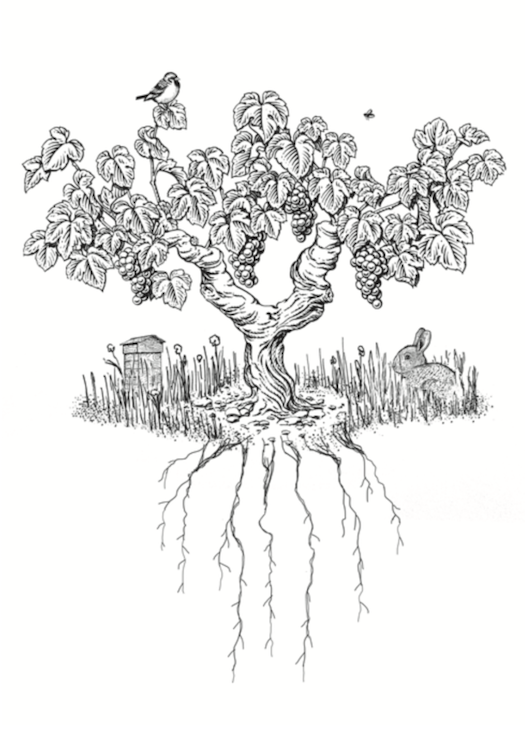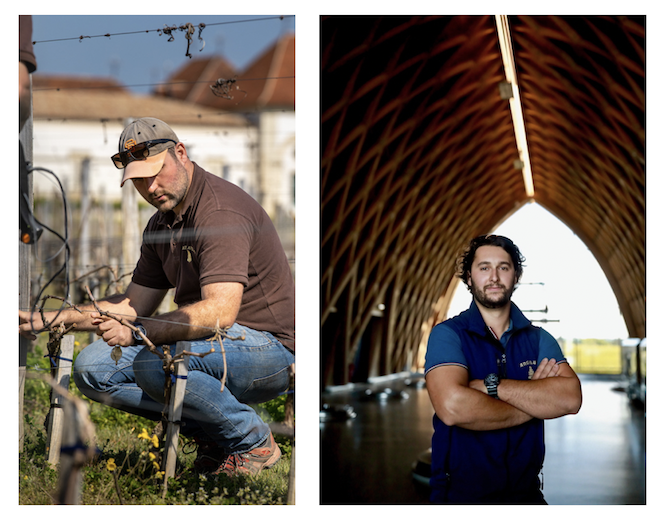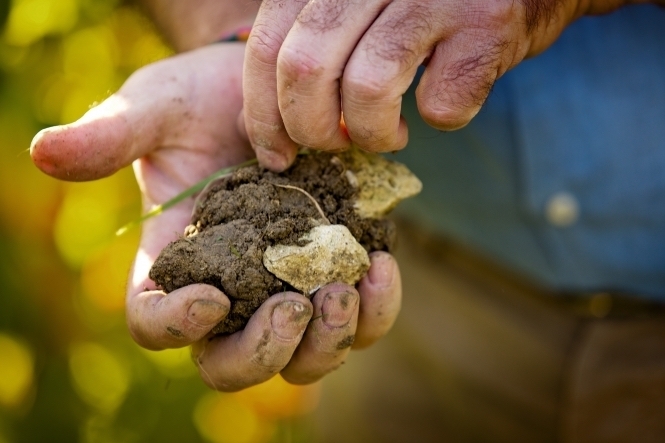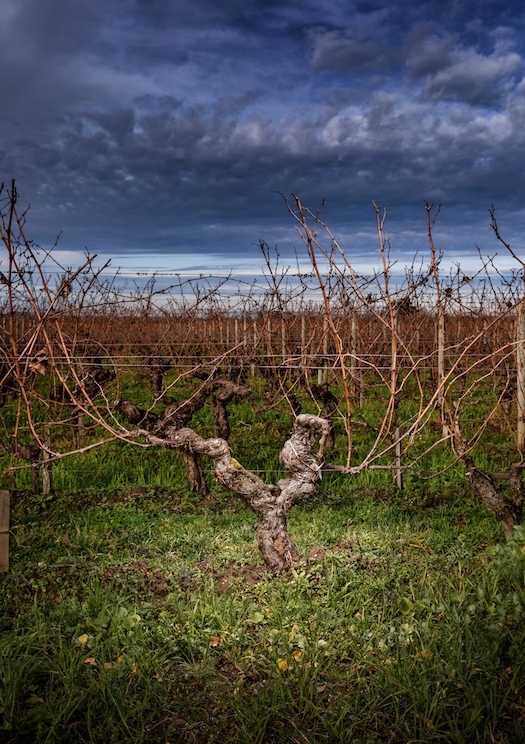
Making good use of biodiversity
A vigneron’s job is to farm the land in such a way that the highest quality of grapes can be produced.
To manage this, the vigneron needs a certain type of soil, grape variety, climate and human skills. The interaction between these different elements produces a subtle alchemy. Farming a soil which is alive and made up of organic matter and maintaining it in perfect balance requires precise, technical expertise, together with carefully thought-out strategies that have been developed through years of observation and experience. What may look perfect in theory, may not actually suit the vegetal and telluric complexity of a particular plot of vines. Since 2018, two experts in the matter have been working at Château Angelus to develop a sustainable vineyard that respects biodiversity, the vines’ best ally. This is at the heart of the château’s philosophy. One of the experts, François Lézian, an agricultural engineer by training, is the estate’s vineyard manager. The second, Benjamin Laforêt, who is a biologist, is the estate’s research and development technical coordinator and the site manager of the Carillon winery.

As soon as the harvesting of the grapes is finished, along with their teams they carry out a key task to ensure the regeneration of the vineyard’s soils: the seeding of cover crops between the vines. “When you harvest, you export a raw material: grapes. You then need to import new natural elements into the soil in order to maintain the vineyard’s balance”, explains François Lézian. The 80 hectares of vines that make up the estate therefore receive several tons of seeds (rye, vetch, field pea, alfalfa, clover, rape, mustard, daikon radish and ray-grass), based on a thorough analysis of the soil’s needs. “A good farmer is one who does nothing” suggests Benjamin Laforêt provocatively. Though meant as a joke, there is some truth in his quip: when nature can do man’s work for him, we shouldn’t get in its way, because it does it very well! Seeding in the rows enables aeration and de-compacting of the soil, thus allowing rainwater to penetrate through natural channels. The addition of winter and spring organic matter provides fertiliser and nourishes the vineyard, making it more resistant to the vagaries of the climate. “When a person is malnourished and weak, the day that they’re confronted with a health problem, they are likely to suffer much more than a fit, well-fed person. It’s exactly the same for soils”, the biologist continues. “If the soils are balanced and rich in organic matter, a buffer effect is created, enabling resistance to drought on the one hand and to excess rainfall on the other”. In other words, if the soil is in good health, the plant will be too.

Another benefit of biodiversity is that it offers shelter for wildlife, which regulates naturally vine pest populations and reduces the need to resort to phytosanitary products. This is proof that not all pests are harmful. “The solution is not destroying pests but living with them”, adds Benjamin. This is also one of the reasons why Château Angelus believes in planting hedges and trees within its vineyards. They are wonderful ecological nesting sites. They provide a landscape that attracts bats, enhances the growth of melliferous flowers and offers shelter for numerous birds, resulting in a natural lowering of pest pressure in the vines. “All these actions in the vineyard, plus appropriate de-suckering* and de-budding of the vines in spring, along with de-leafing in summer, contribute to achieving high quality grapes and optimal balances. These measures to protect the health of the vine canopy enable a very high quality crop to be produced”, concludes François Lézian.
(*) De-suckering consists in removing non-fruit-bearing shoots from the vine, so as to enhance the ripening of the grapes on fruit-bearing shoots. The operation is carried out in spring between the budding and the flowering of the vines.


